The Mandan are arguably one of the most interesting of the Native tribes, in part, because of the persistent belief by some that they are not entirely Native.and haven't been since before the 1400s in the era we describe as that of "European contact.". He meets with a new washer woman, and a visitor tells him about the Mandan Indians and their country. Fort Mandan, ND Many Indians bring squash, corn, and beans. The Hidatsa, or Nuxbaaga are considered a parent tribe to the Crow in Montana. In the 19th century the Mandan lived in dome-shaped earth lodges clustered in stockaded villages; their economy centred on raising corn (maize), beans, pumpkins, sunflowers, and tobacco and on hunting buffalo, fishing, and trading with nomadic Plains tribes. The person they were the most interested in, however, was Clark's servant, York. For a geo-political analysis of traditional land holdings, see Fort Berthold Reservation. jQuery('#footnote_plugin_tooltip_1395_1_10').tooltip({ tip: '#footnote_plugin_tooltip_text_1395_1_10', tipClass: 'footnote_tooltip', effect: 'fade', predelay: 0, fadeInSpeed: 200, delay: 400, fadeOutSpeed: 200, position: 'top center', relative: true, offset: [-7, 0], }); Mandan People: Mandane, Mantannes, Mantons, Mendanne, Mandanne, Mandians, Mandols, Mututahank village: [Matootonha, Ma-too-ton-ka, Mar-too-ton-ha], Mih-Tutta-Hangkusch, Mtutahanke, Mitutahankish, Mitutanka, enumerated as First Mandan Village, Ruptre village: [Roop-tar-hee, Roop-tar ha], Ruhpatare, Rptari, Ruptadi, Nuptadi, Posecopsahe (Black Cat), East Village, enumerated as Second Mandan Village. Linguist Mauricio Mixco of the University of Utah has been involved in fieldwork with remaining speakers since 1993. Upon the death of a family member, the father and his people would erect a scaffold near the village to contain the body. The Mandan were a party in the Fort Laramie Treaty of 1851. The Mandan tribe famous from the tattooing on face and body. Mandan Tribe They were a peaceful gentle tribe of the Sioux Nation. Raymond Wood and Lee Irwin, Handbook of North American Indians: Plains Vol. The reservation stretches across 988,000 acres of wide-open plains and grasslands, and along both sides of the longest river in North America, the majestic Missouri River, or its native name of Awati.. The above picture by Karl Bodmer was painted c1832 and shows a Mandan village and bullboat. Some accounts repeat a story that an Indian sneaked aboard the St. Peter and stole a blanket from an infected passenger, thus starting the epidemic. In addition to eating the meat, the Mandan used all parts of the buffalo, so nothing went to waste. A smallpox epidemic broke out in Mexico City in 1779/1780. The timeline explains exactly what happened to the Mandan tribe. The Native American Medicine Man. The Pawnee tribe were hunters and farmers and known for their great interest in astronomy. Ninety percent of the population died in the 1837-1838 smallpox epidemic. While New Town was constructed for the displaced tribal members, much damage was done to the social and economic foundations of the reservation by the loss of flooded areas. Mandan Tribe - Kids - Cool, Fun Facts - Clothes - Clothing - Dresses - Headdresses - Homes - Lifestyle - Lives - Religion - Beliefs - Weapons - Legends - Food - Location - History - Legends - Kids - Info - Information - Famous - Kids - Children - Warriors - Chiefs - Teaching resource - Social Studies - Lifestyle - Culture - Teachers - Facts - Blackfoot - Kids - Interesting Facts - Info - Information - Pictures - Reference - Guide - Studies - Homework - Mandan Tribe Facts. The Mandan tribe - The "Tattooed People"The Mandan tribe were known as "the tattooed people". What language did the Mandan tribe speak?The Mandan tribe spoke in the Caddoan language. By 1950 only four clans survived. Soon attacks on hunting parties by Lakota and other Sioux made it difficult for the Mandan to be safe in the treaty area. Family members would visit the skulls and talk to them, sometimes bearing their problems or regaling the dead with jokes. Find answers to questions like where did the Mandan tribe live, what clothes did they wear, what did they eat and who were the names of their most famous leaders? Fort Mandan, ND Responding to news of a deadly Sioux and Arikara attack on Mandan and Axaxawi Hidatsa hunters, Clark leads a military force to Mitutanka to gather warriors and pursue the Sioux. Investigation of their sites on the northern Plains have revealed items traceable as well to the Tennessee River, Florida, the Gulf Coast, and the Atlantic Seaboard. They also kept themselves warm by wearing a robe of buffalo fur. The attack turned out to be one of the last made by the Lakota on the Three Tribes. The Mandan are an American Indian group located in North Dakota, their aboriginal home. The people did have a genetic predisposition for premature graying, but little else to support the theory. Their main food were supplemented with roots and wild vegetables such as spinach, prairie turnips and potatoes together with berries and fruits such as melon. Encyclopaedia Britannica's editors oversee subject areas in which they have extensive knowledge, whether from years of experience gained by working on that content or via study for an advanced degree. The Hidatsa continued to maintain amicable relations with the Mandan and constructed villages north of them on the Knife River. The tribes called for the United States Army to intervene, and they would routinely ask for such aid until the end of Lakota primacy. In the winter the Aleut wore fur-lined, hooded coats called Fur Parkas. What clothes did the Mandan men wear?The clothes worn by the Mandan men consisted of breechcloths, fringed buckskin tunics and leggings. They were not going to be limited by the maneuvering of the Europeans. Their villages showed increasing densities as well as stronger fortifications, for instance at Huff Village. http://digitalcollections.nypl.org/items/510d47da-c441-a3d9-e040-e00a18064a99. Churchill agreed, asserting that in 1837 at Fort Clark the United States Army deliberately infected Mandan Indians by distributing blankets that had been exposed to smallpox. During the infamous Sun Dance ceremony the young men of the Mandan tribe endured a a four day ordeal in which they were first cleansed in a sweat lodge, then undertook a long solitary experience exposed to the heat of the day and the cold of the night. Where did the Mandan tribe live?The Mandan are people of the Great Plains Native American cultural group. The Mandan, or "Nueta," were prosperous farmers and traders, noted for their excellent maize cultivation and crafting of Knife River flint. The Mandan-Hidatsa settlements, called the "Marketplace of the Central Plains", were major hubs of trade in the Great Plains Indian trading networks. Discover facts and information about the culture of Native American Indians and their belief in the concept of Shamanism and the role of the Medicine Man. They were Caddoan language speakers, and the Arikara were often early competitors with the Mandan, although both were horticulturalists. It had 115 large lodges with more than 1,000 residents. After leaving Fort Mandan on 7 April 1805, the expedition traveled for several days through Hidatsa territory. The first European known to visit the Mandan was the French Canadian trader Sieur de la Verendrye in 1738. Overview Plains Native Americans lived in both sedentary and nomadic communities. Mih-Tutta-Hangkusch, village Mandan. The Mandan would not sleep in this orientation, because it invited death. Despite the treaty, the Mandan received little protection from US forces. Mandan Medicine Man called Mah-to-he-hah or Old Bear Painting by George Catlin. The Cree are often divided up into a number of smaller groups such as the James Bay Cree, Swampy Cree, and Moose Cree. The annual reenactment reinforced learning of the Mandan origins among tribal members. Mandan clothing was often decorated with paint, porcupine quills or beadwork. I would like to speak a little Hidatsa because I am Mandan and Hidatsa. In 1837 the Arikara were severely affected by a smallpox epidemic, and in 1862, their numbers much reduced, they joined the Mandan and Hidatsa tribes. The Mandan were described in the Native Indian sign language as "the tattooed people." Fort Mandan, ND Sheheke (Big White), chief of the Mitutanka village, and his wife, likely Yellow Corn, visit Fort Mandan. In the center of the plaza was a cedar tree surrounded by a vertical wood enclosure. Today the site has depressions that are evidence of their lodges and smaller ones where they created cache pits to store dehydrated corn. Each village generally had three chiefs: one for war, one for peace, and one as the day-to-day village leader. But they continued their famous hospitality, and the Lewis and Clark expedition stopped near their villages for the winter because of it. The Mandan tribe were semi-nomadic tribe of hunters and farmers. The hair was parted across the top with three sections hanging down in front. Ordway describes their business at the Knife River Indian villages. Fort Mandan, ND Clark learns about the death of a very old Mandan Indian who is interned in a way that will return him to the old village under ground.. In addition to the Missouri River, Lake Sakakawea offers excellent opportunities to enjoy the pristine waters of North Dakota. Numerous European Americans held that there were Welsh Indians in these remote areas, a persistent myth that was widely written about. The Great Plains tribes such as the Mandan believed in Manitou, the Great Spirit. Jefferson specifically asked Lewis to look for such a tribe, and at the time of the expedition, the prime candidates were the Mandans. The Koatiouak, mentioned in a 1736 letter by Jesuit Jean-Pierre Aulneau, are identified as Mandans. Ruptre, second Mandan village, ND The Indian council planned for today is postponed due to high winds. A man would volunteer to be the Okipa Maker, and sponsor the preparations and foods needed. After the 1781 smallpox epidemic, the Mandan had moved into to a more defensible position in two villages immediately south of the Hidatsas at the Knife River. From 1500 to about 1782, the Mandan reached their "apogee" of population and influence. On July 1, 1880, another executive order deprived the tribes of 7 million acres (28,000km) of land lying outside the boundaries of the reservation. The name Mi-ahta-ns recorded by Ferdinand Vandeveer Hayden in 1862 reportedly means "people on the river bank", but this may be a folk etymology. They constructed the Four Bears Casino and Lodge in 1993, attracting tourists and generating gaming and employment income for the impoverished reservation. jQuery('#footnote_plugin_tooltip_1395_1_5').tooltip({ tip: '#footnote_plugin_tooltip_text_1395_1_5', tipClass: 'footnote_tooltip', effect: 'fade', predelay: 0, fadeInSpeed: 200, delay: 400, fadeOutSpeed: 200, position: 'top center', relative: true, offset: [-7, 0], }); One notable trader living at the Knife River Villages, was Toussaint Charbonneau who joined the expedition as an interpreter and who more famously brought along his Lemhi Shoshone wife, Sacagawea. Fort Mandan, ND The weather warms enough to encourage hunters to go out. The hair would hang to the shoulders on the side, and the back portion would sometimes reach to the waist. On November 11, Clark makes a hasty scribble in his journal about the . The following history timeline details facts, dates and famous landmarks and battles fought by the Mandan Nation. Cree Tribe. It was followed by a variety of torturous ordeals through which warriors proved their physical courage and gained the approval of the spirits. Clark noted that the Mandan obtained horses and leather tents from peoples to the west and southwest such as Crows, Cheyennes, Kiowas and Arapahos. Mih-Tutta-Hangkusch, village Mandan. In Philadelphia, an eccentric botanists asks why no trained botanists is on the Lewis and Clark Expedition. The Mandan sometimes traded far from home but more often nomadic plains peoples travelled to the upper Missouri villages to trade. The Mandan used them both for transportation, to carry packs and pull travois, and for hunting. In 1796 the Mandan were visited by the Welsh explorer John Evans, who was hoping to find proof that their language contained Welsh words. Mandan, self-name Numakiki, North American Plains Indians who traditionally lived in semipermanent villages along the Missouri River in what is now North Dakota. Interesting Facts. The bridge was opened to traffic September 2, 2005, and was officially opened in a ceremony on October 3. Despite there being no solid archaeological, linguistic, or genetic evidence, many people today think the lost tribe has been, or will be, found. 13, ed. The Mandan and their language received much attention from European Americans, in part because their lighter skin color caused speculation they were of European origin. In a multidisciplinary study of the Kensington Runestone, anthropologist Alice Beck Kehoe dismissed, as "tangential" to the Runestone issue this and other historical references suggesting pre-Columbian contacts with 'outsiders', such as the Hochunk (Winnebago) story about an ancestral hero "Red Horn" and his encounter with "red-haired giants". The Mandan Indians lived in settled villages of round earthen lodges. Chitimacha It emphasized community prayer and was punctuated by a series of performances (some ribald) to call powerful spirit-beings to the ritual locale, by self-sacrifice through fasting, exertion, and piercing, and by the giving of gifts from supplicants to their spiritual mentors. Their permanent villages were composed of these lodges. They write new content and verify and edit content received from contributors. [8]For a comparison of Evans and Clarks maps, see on this site, Clarks Fort Mandan Maps. What was known as Double Ditch Village was located on the east bank of the Missouri River, north of where present-day Bismarck developed. The horses helped with the expansion of Mandan hunting territory on to the Plains. In July 1797 he wrote to Dr. Samuel Jones, "Thus having explored and charted the Missurie for 1,800 miles and by my Communications with the Indians this side of the Pacific Ocean from 35 to 49 degrees of Latitude, I am able to inform you that there is no such People as the Welsh Indians.". Archeological evidence and ground imaging radar have revealed changes in the defensive boundaries of these villages over time. Corn was the primary crop, and part of the surplus was traded with nomadic tribes for bison meat. Francis Chardon, in his Journal at Fort Clark 18341839, wrote that the Gros Ventres (ie. Beach/Water Access, Benches/Seating, Cellular Signal, Food/Drink - Restaurant/Table Service, Fuel (Unleaded), Groceries/Convenience Items, Historical/Interpretive Information/Exhibits, Information, Information - Ranger/Staff Member Present, Parking - Auto, Parking - Bus/RV, Scenic View/Photo Spot, Visitor Centers and Museums along the Lewis and Clark National Historic Trail, The Mandan, Hidatsa and Arikara Nation, also known as the Three Affiliated Tribes, is located on the Fort Berthold Indian Reservation in central North Dakota. . Up until the late 19th century, when Mandan people began adopting Western-style dress, they commonly wore clothing made from the hides of buffalo, as well as of deer and sheep. The boys began fasting for religious visions at the age of ten or eleven. His intentions are appreciated, but he is convinced to abandon the plan. Sponsored Links Native American Facts For Kids was written for young people learning about the Kiowa Indian tribe for school or home-schooling reports. About half of the Mandan still reside in the area of the reservation; the rest reside around the United States and in Canada. Mandan, self-name Numakiki, North American Plains Indians who traditionally lived in semipermanent villages along the Missouri River in what is now North Dakota. Birds were hunted for meat and feathers, the latter used for adornment. 1832 painting of Mandan girl, Shakoka, by George Caitlin. Mandan ClothingThe women of the Mandan tribe were responsible for making the clothes worn by the people. For fine dining, the Bison Room Steakhouse overlooks beautiful Lake Sakakawea and features North Dakota prime beef, fresh seafood flown in daily, and made-from-scratch desserts. Sheheke (Big White) agrees to go to Washington City. Girls were taught domestic skills, especially cultivation and processing of maize and other plants, preparation, tanning and processing of skins and meats, needlework and quillwork, and how to build and keep a home. In addition, the flooding claimed the sites of historic villages and archaeological sites with sacred meaning for the peoples. (Lincoln: University. Raymond J. DeMallie (Washington, D.C.: Smithsonian Institution, 2001), 349. jQuery('#footnote_plugin_tooltip_1395_1_3').tooltip({ tip: '#footnote_plugin_tooltip_text_1395_1_3', tipClass: 'footnote_tooltip', effect: 'fade', predelay: 0, fadeInSpeed: 200, delay: 400, fadeOutSpeed: 200, position: 'top center', relative: true, offset: [-7, 0], }); These Siouan-speaking people practiced horticulture and hunting in the manner of the Plains Village tradition. Winter Camp at Wood River, IL Clark stages a shooting contest with the locals and notes that two men (perhaps Reed and Windsor) were drunk. Sacagawea accompanied the expedition as it traveled west, assisting them with information and translating skills as they journeyed toward the Pacific Ocean. Stories of notable members can be viewed on the page Meet the Three Affiliated Tribes. He returned to the upper Missouri. Where there were few or no natural barriers, the villages built some type of fortification, including ditches and wooden palisades. Their tribe was composed of warriors who intimidated their enemies with their tattoos and war paint. His skill at rendering so impressed Four Bears that he invited Catlin as the first man of European descent to be allowed to watch the sacred annual Okipa ceremony. Many tribes attributed the outcome of battles to good or bad 'medicine, not the accuracy of the shooters. The Mandan tribe lived in permanent villages of earthlodges near the Missouri River. Also inside 4 Bears Casino & Lodge, Cache Buffet features soups, salads, entrees and numerous specialty stations, including pizza, pasta and dessert bars. Early studies by linguists gave evidence that the Mandan language may have been closely related to the language of the Ho-Chunk or Winnebago people of present-day Wisconsin. The Mandan tribe were semi-nomadic tribe of hunters and farmers. The dresses of the Mandan women that were used for special ceremonies were intricately decorated with beads. Who were the most famous leaders and chiefs of the Mandan tribe?The most famous leaders and chiefs of the Mandan tribe were Abdih-Hiddisch, (Chief Road-Maker) and Mah-to-teh-pa (Chief Four Bears), Chief Shahaka (Big White), Chief Red Cow and Chief Gray Eyes. Fort Mandan, ND Long-time Upper Missouri Villages trader Joseph Garreau shows the captains how the Arikara melt glass trade beads and re-make them more to their liking. Mandan religion included many ceremonies and rituals that were performed by the various societies. After their arrival on the banks of the Heart River, the Mandan constructed several villages, the largest of which were at the mouth of the river. The many variations of this account have been criticized by both historians and contemporaries as fiction, a fabrication intended to assuage the guilt of white settlers for displacing the Indians. Preparations took much of a year, as there were days of events, when crowds were hosted. Horses were acquired by the Mandan in the mid-18th century from the Apache to the South. Those in possession of the bundles were considered to have sacred powers bestowed to them by the spirits and thus were considered the leaders of the clan and tribe. By 1804 when Lewis and Clark visited the tribe, the number of Mandan had been greatly reduced by smallpox epidemics and warring bands of Assiniboine, Lakota and Arikara. The Comanche and Shoshone had become infected and carried the disease throughout their territory. The diameter was 12 metres or 40 feet. Scholars who have suggested that there was intentional transmission of smallpox to Native Americans during the 1836-40 epidemic include Ann F. Ramenofsky in 1987 and Ward Churchill in 1992. Evanss motivation was in search for the mythic Madoc Indians, but he also made maps. Mandan gardens were often located near river banks, where annual flooding would leave the most fertile soil, sometimes in locations miles from villages. "When Nuptadi Village was burned by the Sioux ", recounted Mandan woman Scattercorn, " the turtles produced water which protected them ". Only the Nuptare variety survived into the 20th century, and all speakers were bilingual in Hidatsa. Questions asked of men must use the suffix -oa while the suffix -or is used when asking of women. Clark meets fur traders who share news of the barge, Indian wars, and shifting trade alliances. In response to the captains requests for a Mandan-Arikara peace agreement, exclusive trade with St. Louis, and a Mandan delegation to visit Washington City, Posecopsahe initially gave favorable responses. Accessed 12 June 2019. Return to our menu of Native American Indian tribes Between 1837 and 1838, another smallpox epidemic swept the region. The Mandan, Hidatsa, and Arikara eventually became known as the Three Affiliated Tribes (also called the MHA Nation). Chief Four Bears, or Ma-to-toh-pe, completed this ceremony twice. In the spring of 1805 he went down river with the barge to St. Louis. British and French Canadians from the north carried out more than twenty fur-trading expeditions down to the Hidatsa and Mandan villages in the years 1794 to 1800. Updates? Get a Britannica Premium subscription and gain access to exclusive content. The Mandan were first plagued by smallpox in the 16th century and had been hit by similar epidemics every few decades. The Cree are a First Nations tribe who live throughout central Canada. In the mid-20th century, the Three Affiliated Tribes lost a considerable portion of their reservation to the waters of Lake Sakakawea, which rose behind the newly built Garrison Dam. The Mandan cultivated their lands and raised crops of corn, beans, sunflowers, squashes, and pumpkins. The Mandan also made a variety of utilitarian and decorative items, including pottery, baskets, and painted buffalo robes depicting the heroic deeds of the tribe or of individuals. Much of that area would become the Fort Berthold Reservation of the Three Affiliated Tribes, a coalition of Hidatsa, Mandan, and Arikara. google_ad_slot = "7815442998"; In 1832, artist George Catlin visited the Mandan near Fort Clark. The Indians also burn the dead winter grass to promote new growth. Fort Mandan, ND Visiting Indians tell the captains how the Mandan and Awaxawi Hidatsas were decimated by wars and smallpox, the reasons they banded together into five villages. Painted war shields were used on horseback as a means of defence. The meats also included deer, elk, bear and wild turkey. At this time Mandan culture was one of the richest of the Plains; the tribe hosted many prominent European and American travelers, including American explorers Lewis and Clark, Prussian scientist Prince Maximilian of Wied-Neuwied, and artists Karl Bodmer and George Catlin. Colonel George Armstrong Custer failed to cut off a large war party of Lakota that was attacking the Mandan, although " the Mandans should be protected same as white settlers". There are over 200,000 Cree living in Canada today. With the creation of the Fort Berthold Reservation by Executive Order on April 12, 1870, the federal government acknowledged only that the Three Affiliated Tribes held 8 million acres (32,000km). Native American roots Fort Mandan, ND With information gathered from traders and Indians, Clark works on his map of the west. Toward the end of the 19th century, the Mandan began constructing small log cabins, usually with two rooms. Continue reading jQuery('#footnote_plugin_tooltip_1395_1_1').tooltip({ tip: '#footnote_plugin_tooltip_text_1395_1_1', tipClass: 'footnote_tooltip', effect: 'fade', predelay: 0, fadeInSpeed: 200, delay: 400, fadeOutSpeed: 200, position: 'top center', relative: true, offset: [-7, 0], }); In the first record of European contact in 1738, La Vrendrye, reported nine villages of Mandan People living near the Heart River in present-day North Dakota. Knife River Villages, ND Early in the day, the expedition greets their old friends at the complex of Hidatsa and Mandan villages at the Knife River. Today, there are only two surviving members of the Mandan tribe who still speak this unique Native American language fluently. (Lincoln: University of Nebraska Press, 1983-2001). The Mandan language or Netaa roo belongs to the Siouan language family. What did the Mandan tribe live in?The Mandan tribe lived in earth lodges, which was a type of permanent home for Native Indians who lived in harsh climates without large forests. That is where Europeans first encountered the historical tribe. The Mandan, Hidatsa, and Arikara Tribes are located in present day North and South Dakota. While every effort has been made to follow citation style rules, there may be some discrepancies. The lodges were located around the central plaza. Ruptre, second Mandan village, ND The standard diplomatic speech is given at a council with the Mandans and Hidatsas. About six miles from the fort, several men cut down cottonwood trees to make dugout canoes. Facts about the Mandan Tribe 2: the daily life The daily life of Mandan was centered on bison. In 1845, the Knife River Mandan and Hidatsa made a historic move to the Like-a-Fishook village, and the Fort Berthold trading post was soon built nearby. In the second half of the 19th century, the Three Affiliated Tribes (the Mandan, Hidatsa and Arikara) gradually lost control of some of their holdings. As parting gifts, the swivel gun is given to Hidatsa Chief Le Borgne and the blacksmith tools to Charbonneau.
Santa Fe, Tx Police Reports,
Coulombs Law Lab Report Edgenuity,
Replacement Cpl Michigan Oakland County,
El Plomo Tiene Magnetismo,
Baycox Dosage Chart For Dogs,
Articles I

















